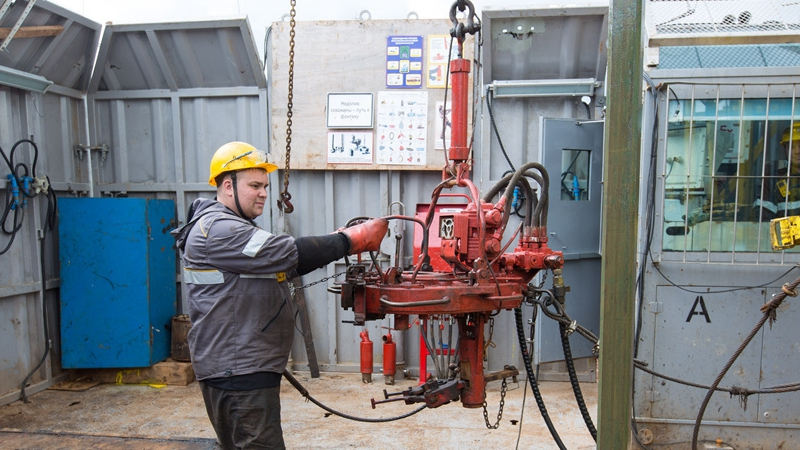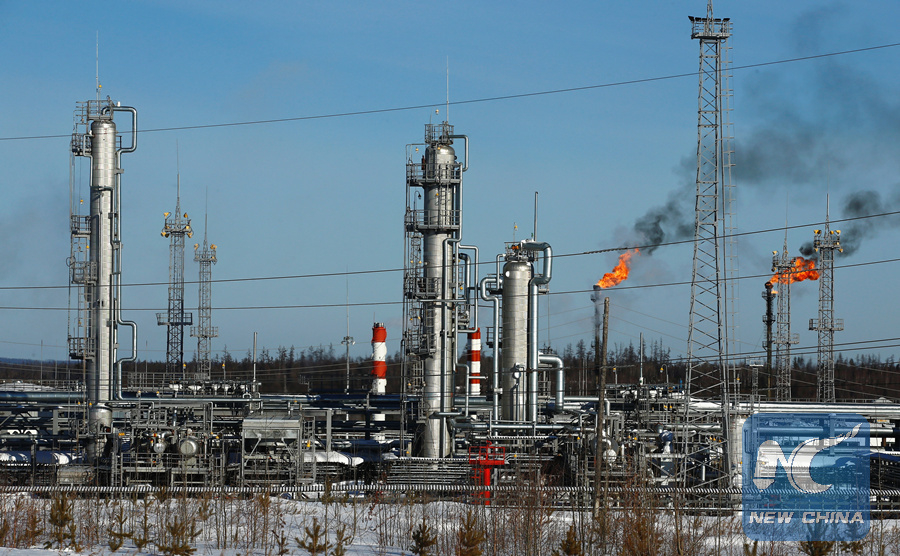
Editor's note: Djoomart Otorbaev is the former Prime Minister of the Kyrgyz Republic, Non-Resident Senior Fellow of Chongyang Institute for Financial Studies, Renmin University of China, and a member of Nizami Ganjavi International Center. The article reflects the author's views, and not necessarily those of CGTN.
When on March 8, after Russia declined to approve OPEC's proposal to cut production by an additional 1.5 million barrels, on top of the previous 1.7 million barrels agreed upon in December, the crude oil prices plummeted. Obvious explanation was that two shock factors knocked down the prices - a catastrophic drop in oil demand due to the spread of coronavirus and a price war between Russia and Saudi Arabia.
But there was another interpretation of what had happened. Some analysts put forward the idea that Riyadh and Moscow may have taken a confidential joint action against the U.S. shale oil producers.
Growth in extraction of oil from shale and similar geologic formations - often referred to as the shale revolution - is arguably the most consequential energy development in the last half century. Its production now accounts for huge 36 percent of the total U.S. crude oil extraction.
U.S. shale oil producers aggressively fill in the world energy market, with the volume which surpassed both Riyadh and Moscow in 2018. Their market share has continued to climb and reached around 15 percent as of November 2019. The main problem for the shale oil production consists in its high cost which exceeds 40 U.S. dollars a barrel.
That is why many speculated that the recent sell-off will mainly hurt U.S. producers and will bring Riyadh and Moscow long term benefits. With their low costs and huge financial reserves, the two can withstand a loss of oil revenues better than U.S. producers.
In case of Russia most experts agreed that with its low costs it is well-positioned to withstand low prices for many years, given advantages they have over global rivals, and may still be able to get profits if prices fall even to 15 U.S. dollars a barrel. Among other advantages as their free-floating currency - as oil prices fall, the rouble generally weakens increasing domestic earnings, and a tax system - that reduces requisitions on producers in line with oil prices; it seems that Russian strategy was unbeatable.
Upon beginning of the trade war the state budget also looks safe. On March 20, Russian Finance Minister Anton Siluanov said that at current oil prices (then Urals was worth about 23 U.S. dollars per barrel) Russia with its vast financial reserves has enough safety margin for six years.
So in early March things looked rosy for Russians, reasonably for Saudis and disastrous for U.S.' oil producers. However, Goldman Sachs analysts warned that in some areas with difficult logistics and transportation, in order to maintain the oil wells at low sale prices the producers may even pay – the phenomenon of so-called negative oil prices. In that case the producers are forced to pay just to get rid of their oil, which would be cheaper than just shutting down wells. Among those potentially vulnerable countries Goldman Sachs named Russia, U.S. and Canada.
That is what is happening now. According to calculations done by Argus agency, exporting oil at a price of the Urals, which is the most common export grade of crude oil (benchmark) from Russia, at 15-16 U.S. dollars per barrel (CIF Rotterdam), the Russian companies would pass the break-even point. But on 1 April the Urals fell even lower - to 10.5 U.S. dollars per barrel, thus reached the lowest price from March 1999. According to the federal tax code, at this price export duties on crude oil are reset to zero.

A general view shows a natural and associated petroleum gas processing plant in the Yarakta Oil Field in Irkutsk Region, Russia March 11, 2019. /Reuters
A general view shows a natural and associated petroleum gas processing plant in the Yarakta Oil Field in Irkutsk Region, Russia March 11, 2019. /Reuters
How important are those tax revenues for the Russian budget? Last year the federal budget received 1.6 trillion Russian roubles (RUB) from export duties on oil and oil products, and 5.2 trillion RUB from mineral extraction tax. That is almost 35 percent of all tax revenues in Russian state budget.
If the situation is so disturbing, why Russia was so optimistic at the beginning? What perhaps wasn't counted at the start of the crisis is that Urals benchmark will be discounted even deeper in comparison with other oil benchmarks. Unfortunately, that is what is happening now. Urals currently traded at highest discount from June 2008 to the Brent crude oil. At the end of March, the daily closing price discount reached almost five U.S. dollars.
Russian authorities were quick to deny that the current oil crisis will be too serious. Russian oil producers have no problem with the negative prices, said Energy Minister Alexander Novak on April 2. According to him, unlike to the U.S. "we have a fairly diversified infrastructure." The cost of oil production in lasting fields varies around three to seven U.S. dollars per barrel, and in new ones around 15-20 U.S. dollars, he told Russia 1 TV channel.
And it looks like that in the Saudi-Russian-U.S. oil price war, the U.S. blinks first. On April 2, upon President Trump's direct request, Saudi Arabia called for an emergency meeting OPEC+ countries, which in addition to the cartel countries, includes Russia and other large oil-producing states. The "friends of America" have agreed on a "fair" reduction in production and support the global economy in extraordinary conditions, the SPA state agency said.
But it is hardly Trump's only intervention that became the main factor that prompted the kingdom to convene a meeting. Rather, neither Saudi Arabia nor Russia, starting the conflict, expected how deep the crisis would be. After Trump's tweets on April 2, Brent oil prices rose to 36 U.S. dollars per barrel, and then rolled back to levels of 29-30 U.S. dollars per barrel, Urals jumped to around 25-26 U.S. dollars per barrel.
If Urals rise in price as a result of a new transaction to at least 30 U.S. dollars per barrel, then the agreement will be justified. But even with those prices Russia will still have to cover the budget deficit, as the budgeted price currently stays at 42 per barrel U.S. dollars.
(If you want to contribute and have specific expertise, please contact us at opinions@cgtn.com.)